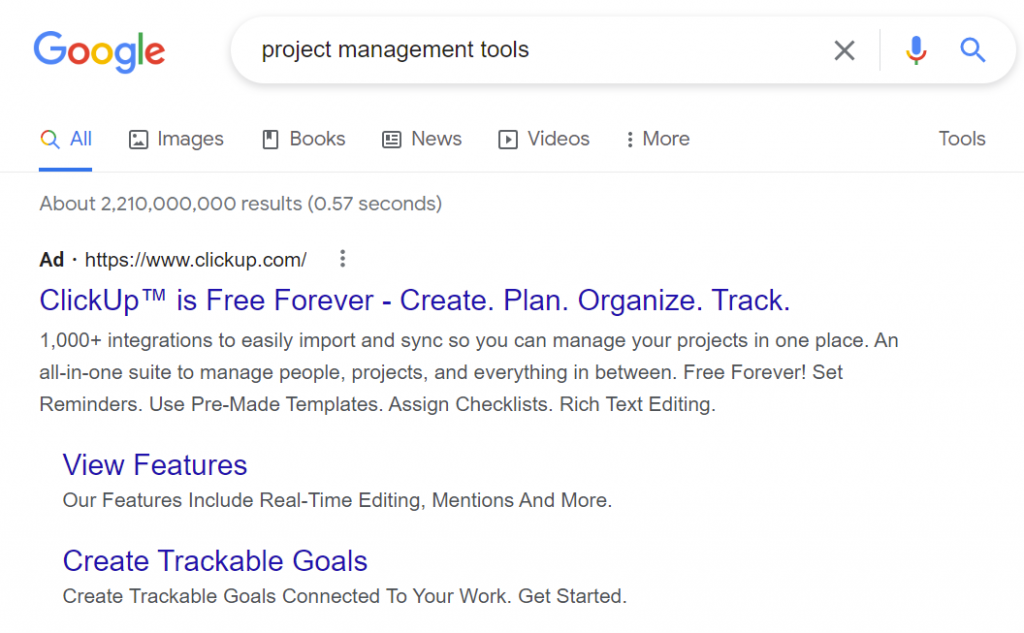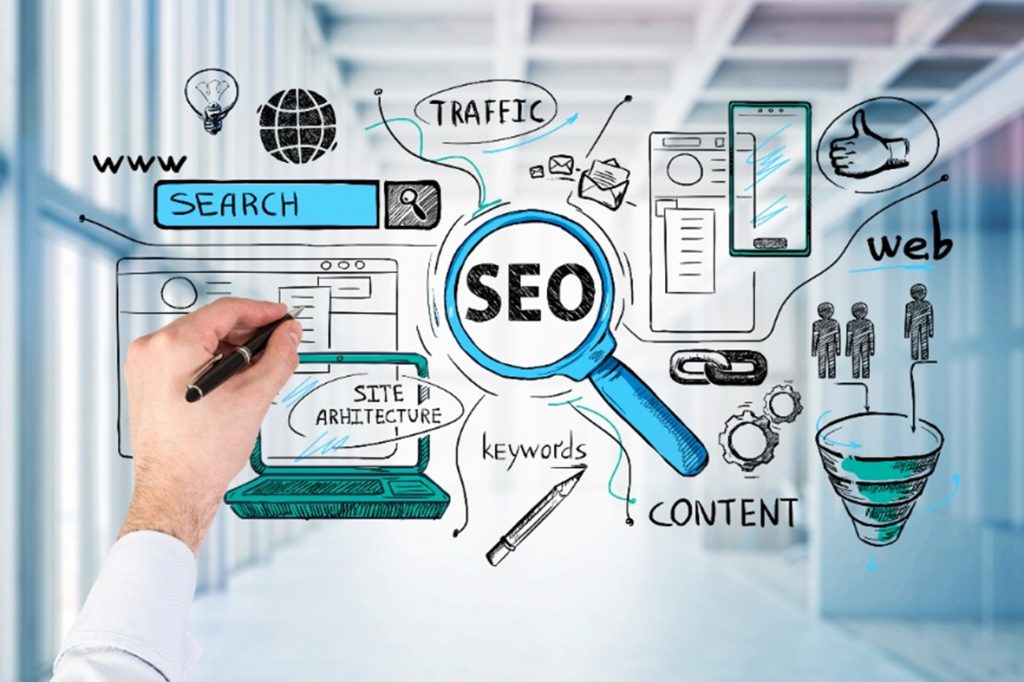If you have created a website and want people to know about it, and for it to start generating income for you, sooner or later you will have to think about promoting it. In this article, we will compare SEO and contextual advertising, specifically for those who cannot decide which method to choose for promoting their website.
Contextual Advertising (PPC) – this is placing your company’s website ads in Google and Yandex search results. You can set the ad text yourself, which will be displayed in the search results. You can also specify the queries for which your ad will be shown. And the main thing is – you only pay for targeted visitors who click through to your site. Contextual advertising is the easiest way to get potential clients to your site. Just a few hours after launching the ad, the first visitors who are looking for your company’s products or services will start coming to your site.
ORDER contextual advertising setup
SEO (search engines optimization) – optimizing your website to meet the requirements of search engines. SEO allows your site to rank high in the organic search results for the most queried words (or the queries you have chosen for promotion). Essentially, with SEO promotion, you choose a list of queries you want to appear in the search results for, just as you would in contextual advertising, and take a set of measures to promote the site for these queries.
Of course, each specific case requires an individual approach, but we will try to consider these two methods of promoting your site in general, based on several criteria: speed, cost, efficiency, and convenience. So, SEO promotion or contextual advertising?
Speed
Contextual advertising in Google AdWords and Yandex Direct allows you to ensure a flow of targeted visitors to your site on the very first day. That is, launching an advertising campaign for the queries you are interested in will take no more than 24 hours on average. A list of queries is compiled, ads are created, the budget is replenished, and that’s it. Your site appears on the first page of search results and starts receiving visitors the same day.

SEO promotion in this sense is significantly inferior, as it requires initial optimization of the site to meet the search engines’ requirements. The duration of this process depends on the number of pages on your site, the speed of your SEO specialist, and the work of your programmers and copywriters who need to implement the technical optimization tasks. Only after this is it recommended to start building a link mass, which can take from 3 to 6 months to see the first results.
It should also be noted that if you have just registered a domain, it is advisable to wait 3-4 months before buying links to avoid the risk of being filtered by search engines. Besides link promotion, content promotion for low-frequency queries is also popular. But this method also takes a lot of time (up to 1 year).
Budget
Undoubtedly, when choosing between SEO and contextual advertising, everyone thinks about expenses, so it’s very important to understand this issue.
It is generally accepted that contextual advertising is more expensive than SEO promotion. To a certain extent, this is true, as you pay for each click on your ad, meaning for each visitor.
In the case of SEO, you pay for the optimization of the site and the links, which can be either rental (payment is deducted every month) or permanent (one-time payment). These links increase the weight of your site and, along with other factors (site age, behavioral factors), help it rise in search results. Rental links are not very expensive (on average 30-50 rubles), but payment is deducted monthly, and their effectiveness is minimal, so many are needed. Permanent links are more expensive (300-3000 rubles), but you pay once, and their effectiveness is significantly higher.
Each site for each query needs an individual promotion strategy, and the link mass may vary. In addition to this, the costs for copywriters and programmers should be included, as creating, filling, and changing pages of your site becomes an ongoing process. Therefore, in some cases, the cost of SEO promotion may be significantly higher, and in others lower.
But there is another side. If you don’t replenish the budget of the advertising system in contextual advertising, your ads will stop showing immediately. Whereas once you have secured positions in the search results through SEO promotion, you can stay there by simply maintaining your site, reducing regular expenses somewhat.
Efficiency
When it comes to efficiency, two factors should be considered: how targeted the traffic will be as a result of the promotion and whether it will be brought in at all.
Contextual advertising guarantees that your site will appear on the first page of search results and even above the organic search results (if the click-through rate is appropriate), which means that traffic will not pass you by. How targeted it will be depends on the setup of the advertising campaign; if everything is done correctly, you will get a flow of exclusively targeted audience to your site.
SEO promotion in this sense lags a bit in terms of guaranteeing top positions for the queries you are interested in. The competition from older sites that have already occupied the niche and have not stopped supporting their projects can be quite strong. This means that getting into the coveted top search results can take a long time, with no guarantees. But if you succeed, there is a chance to stay there for some time, while spending less money than on contextual advertising. In terms of how targeted the traffic will be, the situation is similar to that of contextual advertising.

Convenience
In terms of convenience, contextual advertising definitely wins. Google AdWords and Yandex Direct systems provide a clear and user-friendly interface, as well as extensive functionality. You can quickly select key queries, create an ad in a matter of minutes, set a bid, or its automatic adjustment depending on the situation, daily budget, targeting (who you want to show your ad to), and immediately appear above the search results (or in the position you want). Moreover, at any time, you can pause the campaign or individual ads and keywords.
SEO promotion cannot boast of anything similar, as it is a multifaceted process, requiring different promotion strategies (optimization, link mass, content marketing, having pages on social networks). Therefore, if you are choosing between SEO or contextual advertising, and convenience is important to you, then contextual advertising is just right for you.
Risk
From the perspective of risk, in contextual advertising, you only risk your money. Incorrect campaign settings can lead to the budget being wasted without bringing noticeable results. There is also another case when the campaign is well set up, and you get targeted traffic, but the website or offer (for example, the price) does not satisfy the visitor, and they go to a competitor’s site to place an order. In this case, the ad campaign cannot affect the site’s conversion rate, as it stops interacting with the user after the click. Therefore, we recommend creating a good and user-friendly website with a detailed description of your service or product and conducting a market analysis of your offer before launching the campaign.
SEO promotion also has several risks, the first being possible sanctions from search engines. These sanctions are most often imposed for black hat methods, such as buying external links to the site. Incorrect link purchasing can result in the site being filtered, causing it to drop significantly in search results or be removed entirely.
The second risk is a complete or partial lack of promotion results. That is, after spending time and money, you may find that after six months to a year, you have not reached the desired top positions for the chosen queries or only a few queries have led to visitors, while the rest have not.
ORDER contextual advertising setup
As you can see, SEO and contextual advertising have different mechanisms of action and areas of application. Contextual advertising is expensive and brings clients immediately, while site promotion brings clients later, but it is somewhat cheaper and more profitable in the long run. For each specific case, everything needs to be analyzed and calculated to choose the most effective option in terms of cost-to-financial result ratio.
Contextual Advertising
Speed
Budget
Efficiency
Convenience
Risk
SEO Promotion
Speed
Budget
Efficiency
Convenience
Risk
